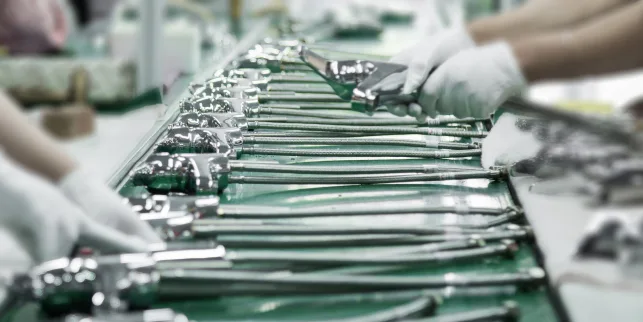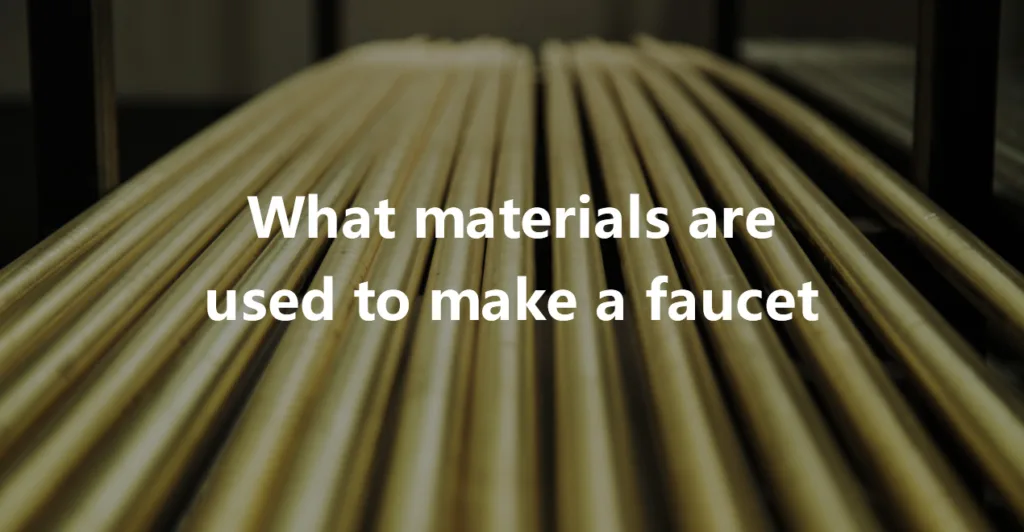What Materials are Used to Make a Faucet?
Regarding the faucet purchase, no matter what angle is recommended, there is no getting around the material issue.
This article will focus on the types of faucet body materials and their respective advantages and disadvantages.
Faucet common materials are brass, stainless steel, zinc alloy and so on. brass is the mainstream material of faucet on the market, stainless steel is more used in the kitchen faucet.
Brass
Brass faucet is the most widely used on the market, the process is relatively mature material, brass alloy corrosion resistance, made of products more durable; brass ions have anti-bacterial function, better guarantee the health of water.
1. Full brass, pure brass
First of all, we should clarify a concept: full brass ≠ pure brass.
Pure brass refers to the brass that has been refined technically and has a purity of 99.5% or more. But the nature of pure brass is soft, not easy to cut, not suitable for the manufacture of faucets.
The vast majority of brass faucet products on the market for the base material of brass-zinc alloy, because of its good mechanical properties, good thermoplasticity, good cutting, easy to braze and weld, corrosion resistance and other advantages, is widely used in faucet products.
The entire faucet products are made of brass alloy material, can be called “brass faucet”. Some businesses in order to attract consumers, playing the “pure brass faucet” statement, is quite unprofessional, and even suspected of false advertising.
In fact, brass and pure brass are two different categories of concepts, in the purchase of faucet products, consumers should recognize the “brass”, pay attention to screening.
2.National standard brass, non-standard brass
Pure brass can not manufacture faucets alone, need to add other alloys to enhance processing performance.
According to how much brass content in the alloy, can also be divided into H59 brass, H62 brass, H65 brass and other types.
Among them, H59 brass is the main choice of brass faucet material, that is, HPb59-1 brass, the first letter of the brand name “H” means brass, the next two figures indicate the average brass content, 59 brass that is the brass content of ≥ 59%, -1 means that the lead content <1%. Because it meets the requirements of the national standard, H59 brass is also called national standard brass.
Corresponding to the existence of “non-standard brass”, that is, not in line with the provisions of the national standard of brass, a lot of low-priced faucet with non-standard brass. Non-standard brass will precipitate a lot of heavy metals and other harmful substances, long-term use is harmful to human health!
3. Net leaded brass, low leaded brass, lead free brass
We all know that heavy metals are harmful to the body, so why do we need to mix lead into brass when forging faucets?
Do so because adding lead will greatly improve the cutting performance of brass castings, lead is not soluble in brass-zinc alloy, but can play an excellent lubricating effect, if not mixed with lead, manufacturing faucets will become very difficult.
Some people talk about lead, turn to buy stainless steel faucet. In fact, brass faucet lead content control has been quite mature.
When choosing, often see “net lead brass, low lead brass, lead-free brass” and other different references, is the brass faucet low lead publicity.
“Lead-free brass” is not zero lead content, just lead content to less than 0.3%, “low lead brass” was first proposed by the United States, the standard is 0.25% of the lead content, “net lead brass “Net lead brass” and “low lead brass” a meaning, just mention different.
At 0.25%-0.3%, the lead content has been controlled very low to ensure the safety and health of water.
Stainless steel
Stainless steel faucet hardness, toughness is better than brass, very durable. Does not rust, does not contain lead, health and environmental protection.

Stainless steel according to the series 200 series, 300 series, 400 series, the professional saying is based on the crystal structure of ferrite, martensite, austenite, the common type of 430, 201, 304, 316 these four, almost exactly the same from the appearance, but the actual performance, price is very different.
430: the content of about iron + 12% chromium, is the lowest price of the four materials, the worst corrosion resistance. Careful partners will find that the outermost layer of the bottom of the stainless steel cookware pots and pans are made of this steel, so over time, it will produce dirt that is difficult to remove.
201: also called high manganese steel, high manganese content, easy to rust; containing less nickel, corrosion resistance is not as good as 304. market, some unscrupulous merchants in order to save costs, will 201 as 304 to deceive consumers
304: also known as 18/8 stainless steel, the content of iron +18% chromium +8% nickel, corrosion and rust resistance than 201, 430 to be better, is currently the most widely used stainless steel materials.
316: also called 18/10 stainless steel, the content of about iron +18% chromium +10% nickel, the price is the highest in the kind of material, corrosion and rust resistance of the best. 316 is usually used in some high-end equipment, such as aerospace, food machinery, high-end cookware and other fields.
Europe and the United States developed countries on stainless steel eating utensils requirements are quite strict, the provisions for direct and food contact area of stainless steel contains at least 16% chromium, can be said to be a very authoritative reference. Daily life we cooking water and drinking water are from the faucet, in order to safety and health, stainless steel faucet at least to choose 304 material.
Zinc alloy
The advantage of zinc alloy faucet is that the price is low, but it is easy to rust, the heavy metal content is more, and the service life is short.
Therefore, faucet purchase is not recommended to buy zinc alloy material.
Summary
Brass, stainless steel, zinc alloy, which material faucet is good?
Recommended to buy brass and stainless steel material faucet, good stainless steel faucet price is higher, if more focus on cost-effective, brass faucet is definitely a good choice!

